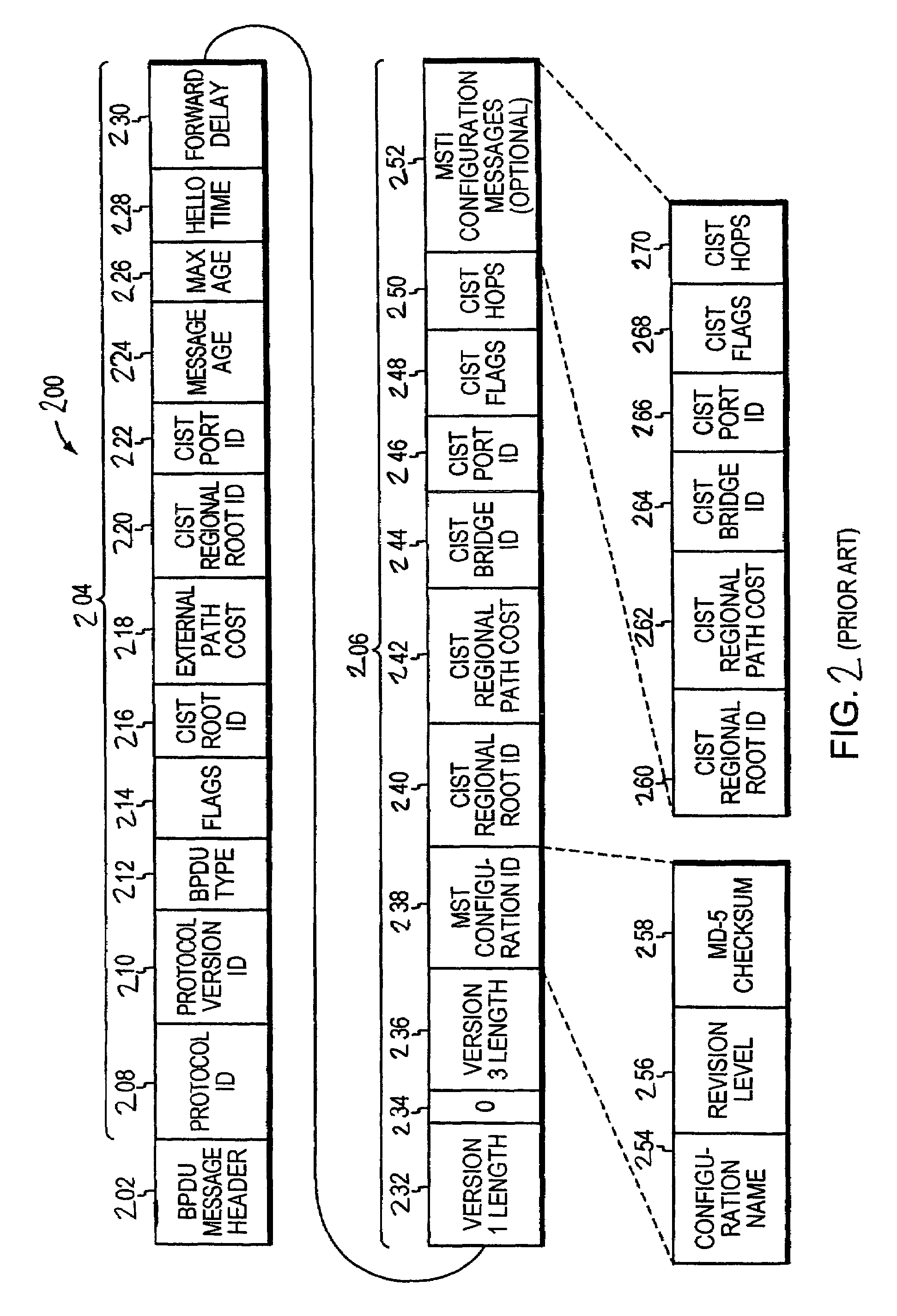Cross stack rapid transition protocol
a technology of cross-stack transition and protocol, applied in the field of computer network reconfiguration, can solve the problems of high undesirable loops, circuitous paths or loops within the network, proliferation of data frames along loops, etc., and achieve the effect of quick reestablishment of connectivity
- Summary
- Abstract
- Description
- Claims
- Application Information
AI Technical Summary
Benefits of technology
Problems solved by technology
Method used
Image
Examples
Embodiment Construction
[0047]FIG. 3 is a highly schematic illustration of a bridged network 300. The bridged network 300 includes a plurality, e.g., three, intermediate network devices 302-304 that are organized as a stack 306. In the illustrative embodiment, the network devices 302-304 are network switches and the stack 306 is a switch stack. Bridged network 300 further includes a backbone network 308 which, in turn, includes a plurality of interconnected intermediate network devices, such as backbone switches 310-312. Each switch of switch stack 306 is individually coupled by one or more corresponding ports to the backbone network 308 by corresponds links, such as point-to-point links. Specifically, switch 302 is coupled to backbone switch 310 via link 314, and to backbone switch 311 via link 315. Switch 303 is coupled to backbone switch 311 via link 316. Switch 304 is coupled to backbone switch 311 via link 317, and to backbone switch 312 via link 318. Backbone switches 310-312 are interconnected by a ...
PUM
 Login to View More
Login to View More Abstract
Description
Claims
Application Information
 Login to View More
Login to View More - R&D
- Intellectual Property
- Life Sciences
- Materials
- Tech Scout
- Unparalleled Data Quality
- Higher Quality Content
- 60% Fewer Hallucinations
Browse by: Latest US Patents, China's latest patents, Technical Efficacy Thesaurus, Application Domain, Technology Topic, Popular Technical Reports.
© 2025 PatSnap. All rights reserved.Legal|Privacy policy|Modern Slavery Act Transparency Statement|Sitemap|About US| Contact US: help@patsnap.com



